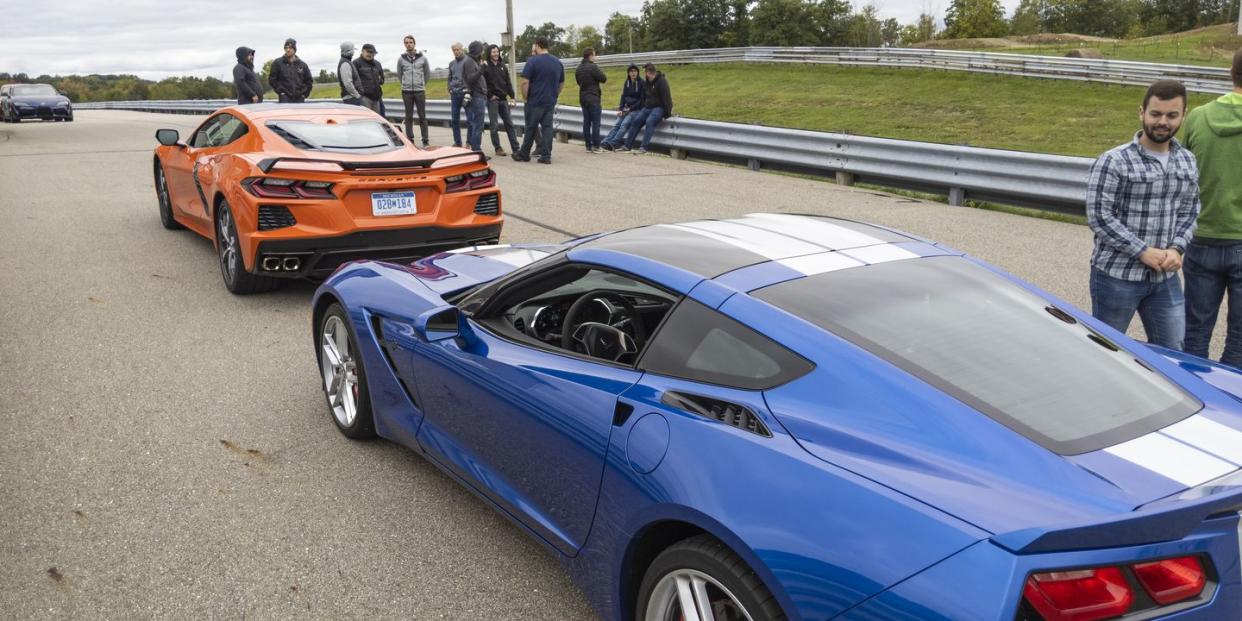Racetrack Throwdown: 2020 Chevy Corvette C8 vs. 2019 Corvette C7

C/D took a 2020 mid-engine Chevrolet Corvette C8 and a 2019 front-engine Corvette C7 to Grattan Raceway in west Michigan for testing.
The cars both had the track-capable Z51 Performance package, adaptive dampers, and eight-speed automatic transmissions, and both wore Michelin summer tires developed for the Corvette. Stability control was off.
The difference between the two came down to just about one second. Who won? We won't spoil it for you. (The answer is in the third paragraph down.)
Engineering theory states that, all other things being equal, a mid-engine car's superior weight distribution should enable it to lap a racetrack quicker than a front-engine car. To find out if Chevrolet had turned theory into reality, we pitted the mid-engine C8 against the front-engine C7 at Michigan's Grattan Raceway.
It was an ideal test case: Both cars were equipped with track-capable Z51 packages, adaptive dampers, and eight-speed automatics—a dual-clutch unit in the C8. Both had additional wheel camber dialed in as recommended in their owner's manuals for track use. Both wore Corvette-developed Michelin summer tires, though the C8 had the latest Pilot Sport 4S rubber, whereas the C7 wore the older Pilot Super Sports. We turned off stability control so that we could detect even the most minute chassis differences, and we turned on the RaceLogic VBox LapTimer.
After about a dozen rounds battling Grattan’s 2.2 miles of heaving, mean-spirited pavement in each car, engineering theory won: The C8 turned a best lap of 1:26.1, the C7 a 1:27.0. A roughly one-second difference might not sound like much, but consider that after just a half-dozen laps, the C8 would cross the finish line as the C7 pulls onto Grattan’s straight. The data revealed that the C8 braked later into several corners and accelerated harder out of others—though the C7 managed to narrow the gap in a couple spots. Through the 100-mph sweeper feeding the main straight, the C8 was about 3 mph faster. It hit 142 mph before braking into Turn 1 to the C7’s 140, and then braked with 1.16 g’s to the C7’s 1.00. It registered a maximum of 1.32 g’s in the banked Turn 8 hairpin versus the C7’s 1.30 g’s.
But such close lap times don’t remotely convey how much easier it is to go fast in the C8. It cuts more cleanly into turns, and its rear tires are more planted exiting them; the C7’s tail is nervous and twitchy by comparison. Indeed, the C8 feels as approachable on the track as it does on the road. That’s a rare combination, one worthy of respect. The C8 has ours.

You Might Also Like

